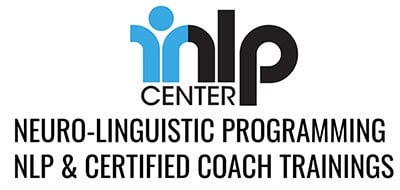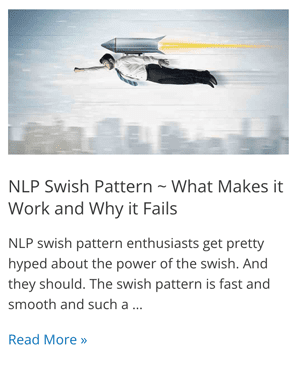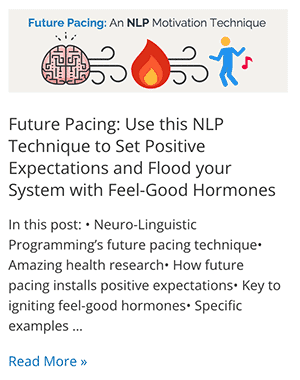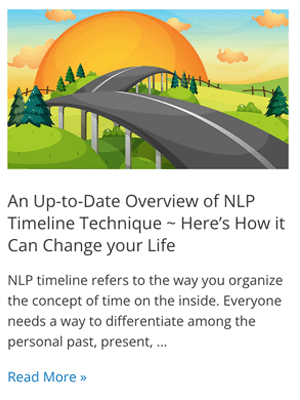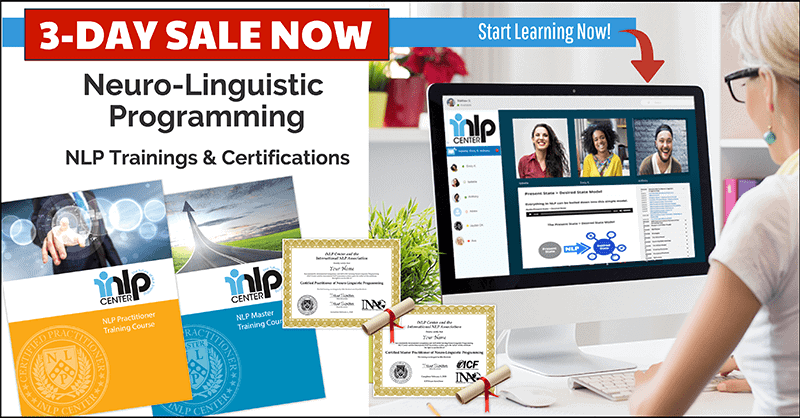NLP anchoring is one of the simplest NLP techniques to use.
Based on the work of Nobel Prize-winning psychologist Ivan Pavlov, basic NLP anchoring is done by pairing physical touch with a feeling or behavior you want to have at your disposal.
NLP techniques, such as anchoring, are so common that your life has been affected by them, even though you may not have set them up intentionally.
Have you ever put a rubber band around your wrist and snapped it each time you were tempted to do something wrong?
For example, let’s say you don’t want to swear anymore. Each time you swear, you snap the rubber band. Ouch! The idea is that you begin to associate swearing with the pain of the rubber band snap, which makes you not want to swear. Swear, feel pain. Swear, feel pain. This is super basic NLP anchoring.
Using NLP Anchoring to Instill Positive Feelings

The most common use of NLP anchoring is to have a way to intentionally feel resourceful in the right situations. For example, you may want to feel more confident when making a business phone call. An NLP anchor can grant access to the confidence you have in other situations that are not currently available to you when making business phone calls.
Try this experiment with NLP anchoring. Read the following steps through once and then do them. It’s more interesting after you’ve tried it for yourself.
NLP Anchoring in 5 Quick Steps
Time needed: 10 minutes
NLP Anchoring in 5 Quick Steps
- Determine how you want to feel.
For example, “more confident”.
- Remember a time when you felt really confident.
It can be any memory when you were feeling confident, under any circumstances. You do have one! Relax and let a memory come to mind in which you naturally felt confident.
- Choose an anchor device that involves touch
For example, touching your thumb and forefinger together or making a fist.
- Remember what you saw, heard and felt in your confident memory.
You must put yourself inside the memory as if reliving it. Don’t view the memory from a distance; the feelings won’t come back. You’ve got to ‘be there’ again.
Relive the memory until you begin to feel the confidence coming over you in the same way you felt it at the time. As you feel that confidence coming on, activate your anchoring device from step #3.
For example, touch your thumb and forefinger together as the confident feeling increases. Release your thumb and forefinger when the feeling begins to subside. If you’ve done this well and there’s no underlying reason you shouldn’t feel more confident, this anchor set! - Test the anchor.
For example, by touching your thumb and forefinger together in exactly the same way again and find out if you naturally access that confident state. Of course, don’t be skeptical and resist the anchor. Allow it to happen.
If it worked, you now have an NLP anchor! From here on out, you get to feel confident whenever you touch your thumb and forefinger together. Cool, huh?
Or Maybe Not
Not all NLP techniques work every time and with everybody. NLP anchoring won’t work under certain circumstances. Your confidence anchor may fail you in a situation in which intense fear or dread is stronger than the anchor you’ve set. Does this mean NLP anchoring is bogus? Nope.
It just means that anchoring may not be a cure-all for your worst stuck states. Part of using a good tool like NLP anchoring is understanding its limitations. Take your average garden hoe. It works like a charm in soft soil with weeds that have shallow roots.
Since there are lots of these kinds of weeds and soft soil is common, garden hoes are very popular. Trying to use a common garden hoe in rock hard soil with tall, deeply rooted weeds, however, is futile.
NLP anchoring is no different. It will work under the right circumstances. In other circumstances, you may need to add additional tools or do other work to ‘soften the soil’.
Other NLP Techniques:
NLP Anchoring and Advanced Anchoring are taught in our NLP Practitioner Training. If you are interested in learning more cool NLP techniques, read about our NLP Practitioner Training.


